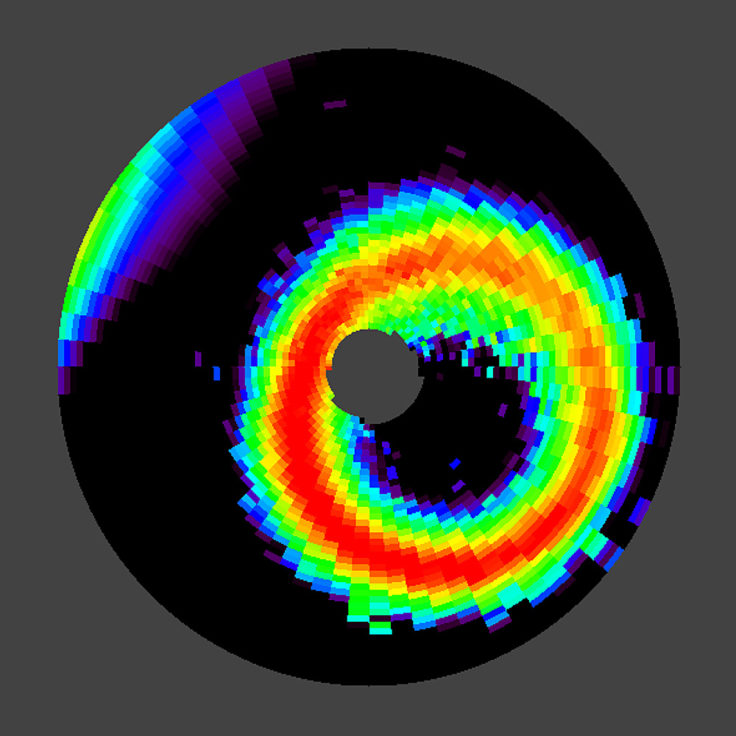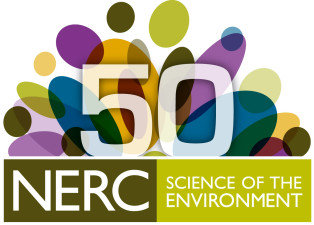DATA AS ART #04
Electron precipitation
Space weather events involve large explosions on the Sun, called coronal mass ejections, which create geomagnetic storms. These storms are fierce enough to tear open the magnetic field that protects the Earth from harmful cosmic rays.
Energetic particles, which are trapped in the Earth’s magnetic field some 35,000km above the Earth’s surface, are then forced down towards the Earth’s atmosphere. These particles change the chemistry of the atmosphere and create nitric oxide, which in turn affects the heating and cooling of the atmosphere.
The challenge is to understand how this links to the climate change that we experience at the Earth’s surface through winds and atmospheric circulation.

In this image the coloured ring shows the footprint of the Earth’s magnetic field around the South Magnetic Pole. The colours represent the intensity of energetic particles (red represents highest intensity) that typically reach the upper atmosphere during space weather events.
Data source:
Dr Nigel Meredith
Wave Particle Data Analyst
British Antarcic Survey
